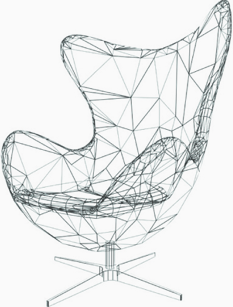Maintenance and Longevity: Caring for Your Office Furniture Investment
In the world of business, investments come in various forms. While we often think of financial assets and technology as primary areas of focus, it's essential not to overlook the significance of another critical aspect: office furniture. The furniture in your workspace plays a vital role in creating a conducive and productive environment for your employees. Moreover, it represents a significant financial investment that should be protected and maintained to ensure its longevity.

In this blog post, we'll explore the importance of caring for your office furniture and provide tips on how to maintain it effectively.
The Importance of Office Furniture
Before diving into maintenance tips, let's take a moment to understand why office furniture is so crucial to your business:
-
Employee Comfort and Productivity
Comfortable and ergonomic office furniture promotes employee well-being and productivity. When your team is comfortable, they can focus better on their tasks and experience fewer distractions caused by discomfort or pain.
-
Aesthetic Appeal
The appearance of your office space sets the tone for your business. High-quality, well-maintained furniture contributes to a professional and positive image. It can also leave a lasting impression on clients, partners, and visitors.
-
Long-Term Investment
Office furniture represents a considerable financial investment. When properly cared for, it can last for many years, saving your business money in the long run. Regular maintenance and repair are often more cost-effective than replacing furniture prematurely.
-
Sustainability
Sustainable practices are becoming increasingly important to customers and clients. By extending the lifespan of your office furniture, you reduce waste and demonstrate a commitment to environmental responsibility.
Tips for Office Furniture Maintenance
Maintaining office furniture is essential to ensure its longevity and keep your workspace comfortable and functional. Here are some practical tips for office furniture maintenance
-
Regular Cleaning
-
Dust all surfaces regularly with a soft, lint-free cloth or a microfiber duster.
-
Wipe down surfaces with a damp cloth to remove dirt, stains, and spills. Use mild, non-abrasive cleaning solutions suitable for the specific material (wood, metal, laminate, etc.).
-
For upholstered furniture, vacuum the fabric regularly to remove dirt and dust.
-
Preventive Measures
-
Place desk pads or mouse pads to protect desk surfaces from scratches and scuffs.
-
Invest in cable management solutions to prevent cords and cables from tangling or damaging furniture.
-
Ergonomic Adjustment
-
Ensure that office chairs and desks are adjusted correctly to fit each employee's body type and comfort.
-
Encourage employees to report any discomfort or ergonomic issues with their furniture.
-
Upholstery Care
-
Treat stains promptly and professionally to prevent permanent damage. Follow manufacturer-recommended cleaning guidelines.
-
Repair and Maintenance
-
Regularly inspect furniture for loose screws, damaged components, or signs of wear and tear.
-
Address any issues promptly by tightening screws or seeking professional repair services.
-
Lubricate moving parts (such as chair casters and drawer slides) to ensure smooth operation.
-
Proper Storage
-
When storing extra furniture or seasonal items, ensure they are kept in a clean, dry, and climate-controlled environment.
-
Use furniture covers or protective wraps to prevent dust and damage during storage.
-
Educate Employees
-
Train employees on the proper use and care of office furniture.
-
Encourage them to report any damage or maintenance issues immediately to prevent further problems.
-
Rotation and Redistribution
-
Periodically rotate and redistribute furniture to ensure even wear and tear.
-
This can extend the lifespan of heavily used items and prevent excessive wear in one area.
-
Regular Inspection
-
Conduct routine inspections of your office furniture to identify any potential issues.
-
Look for loose screws, wobbly legs, or damaged parts and address them promptly.
-
Professional Maintenance
-
Consider hiring professional furniture maintenance and repair services for more complex issues or refurbishment projects.
-
Professional services can help extend the life of your furniture and keep it looking and functioning like new.
-
Follow Manufacturer Guidelines
-
Always follow the manufacturer's care and maintenance instructions provided with your furniture.
-
Adhering to these guidelines can help you avoid voiding warranties and damaging the furniture.
-
Budget for Replacement
-
Office furniture has a finite lifespan. Budget for the eventual replacement of worn-out or outdated pieces to maintain a comfortable and modern workspace.
By implementing these office furniture maintenance tips, you can ensure that your investment remains in excellent condition, providing a comfortable and productive environment for your employees while maximizing the longevity of your furniture.
Conclusion
Your office furniture is more than just a functional necessity; it's a crucial part of your business's image, employee comfort, and long-term financial strategy. By implementing regular maintenance practices and investing in professional care when needed, you can ensure that your office furniture investment pays off in the form of a comfortable, productive, and aesthetically pleasing workspace that lasts for years to come. Remember, taking care of your furniture is not just an expense; it's a wise investment in your business's success.
- 09.08.2023